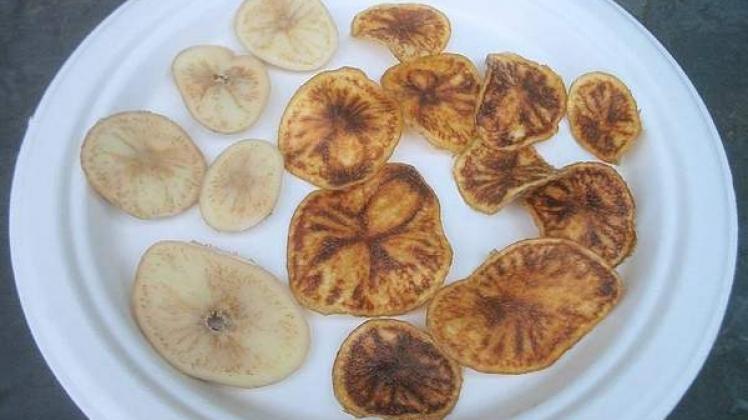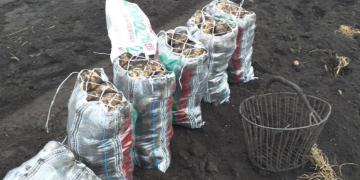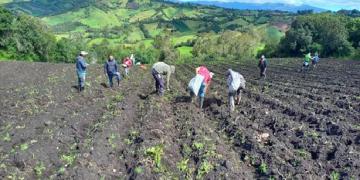EEUU: Psyllids arrive early in some NW potato fields
Potato psyllids, which spread the bacteria that causes zebra chip disease in potato fields, have been discovered in Oregon commercial fields.

Three potato psyllids captured on bittersweet nightshade plants growing wild in Twin Falls County, Idaho, have tested positive for the Liberibacter bacterium that causes zebra chip disease in potatoes, according to a University of Idaho emailed alert.
In addition to eight adult psyllids captured on traps near nightshade, a single potato psyllid was confirmed on a sticky trap from a commercial spud field in Twin Falls County.
“Given that this is the earliest we have ever found potato psyllids in potatoes and the first time we have ever found positive psyllids from bittersweet nightshade, we strongly urge growers and crop consultants to have a (pest management) program in place and to begin local monitoring of fields,” UI Extension entomologist Erik Wenninger said in the alert.
Several commercial growers in Oregon have also reported potato psyllids in their spud fields, about a week and a half earlier than normal, and psyllids have been captured on wild host plants in Washington.
Oregon State University Extension entomology specialist Silvia Rondon said overall numbers of the small, winged insects remain low, and testing is ongoing to determine if psyllid samples submitted by growers are positive for Liberibacter.
Zebra chip, which causes bands in tuber flesh that darken when fried and reduces yields, first arrived in the Pacific Northwest in 2011. Psyllid populations and disease pressure have been low during the past two seasons — in 2014, just 0.1 percent of Oregon psyllids tested positive for Liberibacter. However, Rondon is uncertain how a mild winter and a turn toward warmer weather may affect psyllid populations this season.
Rondon said Oregon will maintain its usual monitoring program throughout the season, surveying 70 fields in Umatilla, Morrow, Baker and Union counties in Oregon and Walla Walla County, Wash.
In Washington, monitoring of the host plant matrimony vine has confirmed populations throughout the winter, which are now expanding, said Joe Munyaneza, a research entomologist with USDA’s Agricultural Research Service in Wapato, Wash. Munyaneza said eggs, nymphs and adult psyllids have also been found on traps by bittersweet nightshade.
Wenninger said Idaho has started its scouting program with light monitoring of 17 sites and intensive monitoring of four sites. The program will gradually expand to include light monitoring of 75 sites and intensive monitoring of 13 sites, similar to last season.
In recent years, many Idaho growers, such as Kevin Loveland, of Fort Hall, have avoided applying zebra chip insecticides, pending confirmation of infected psyllids in their regions through the UI scouting program.
“Our agronomists pay attention to it big time, but I don’t think it’s gotten too serious up this way,” Loveland said of the zebra chip threat.
Jeff Miller, who will check psyllid traps on behalf of Rupert, Idaho-based Miller Research, said the monitoring program should be especially important to growers this season.
“The winter was so mild and then we found them so early, it’s pretty safe to expect the (psyllid) pressure could be greater this year,” Miller said.
Andy Jensen, manager of the Northwest Potato Research Consortium, said Northwest states have applied for a $3 million USDA Specialty Crop Research Initiative grant to further study psyllids and zebra chip. He should know if the application is approved by late September.
Fuente: http://www.capitalpress.com/Research/20150529/psyllids-arrive-early-in-some-nw-potato-fields








